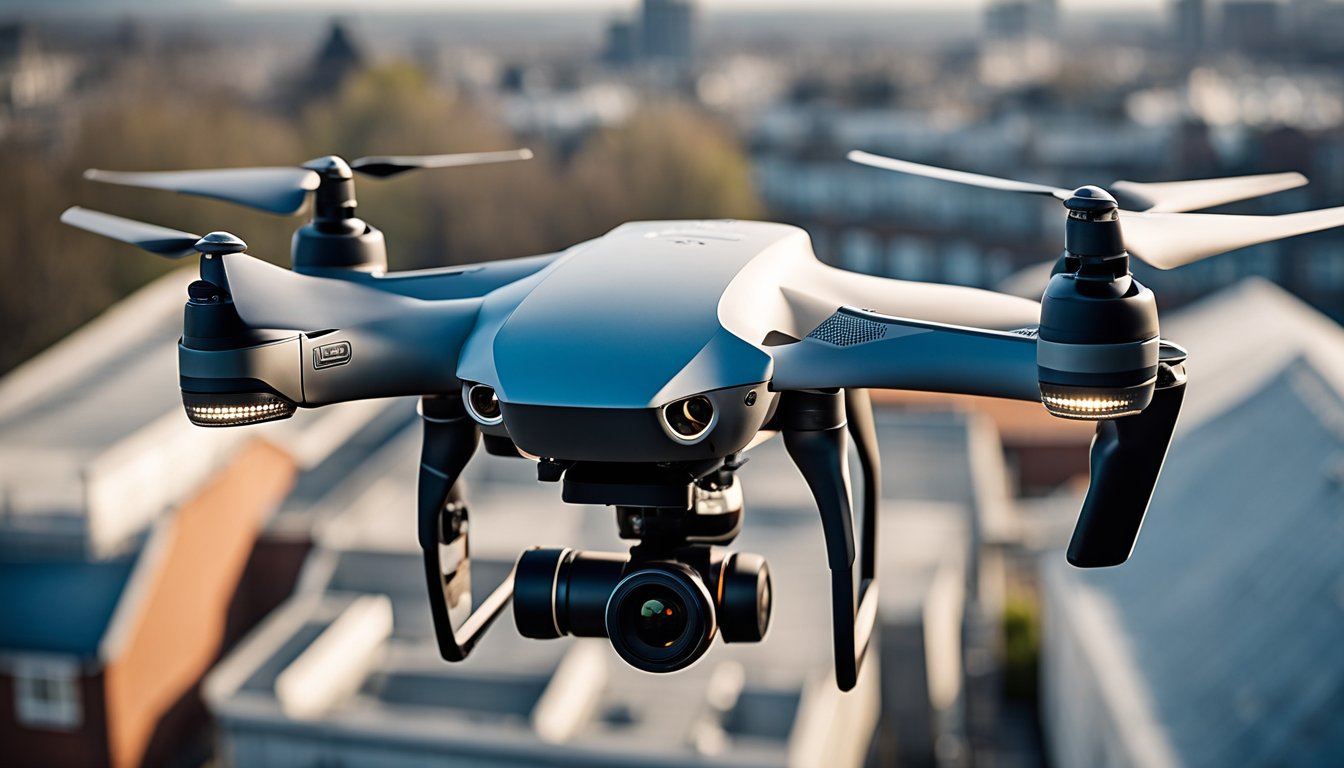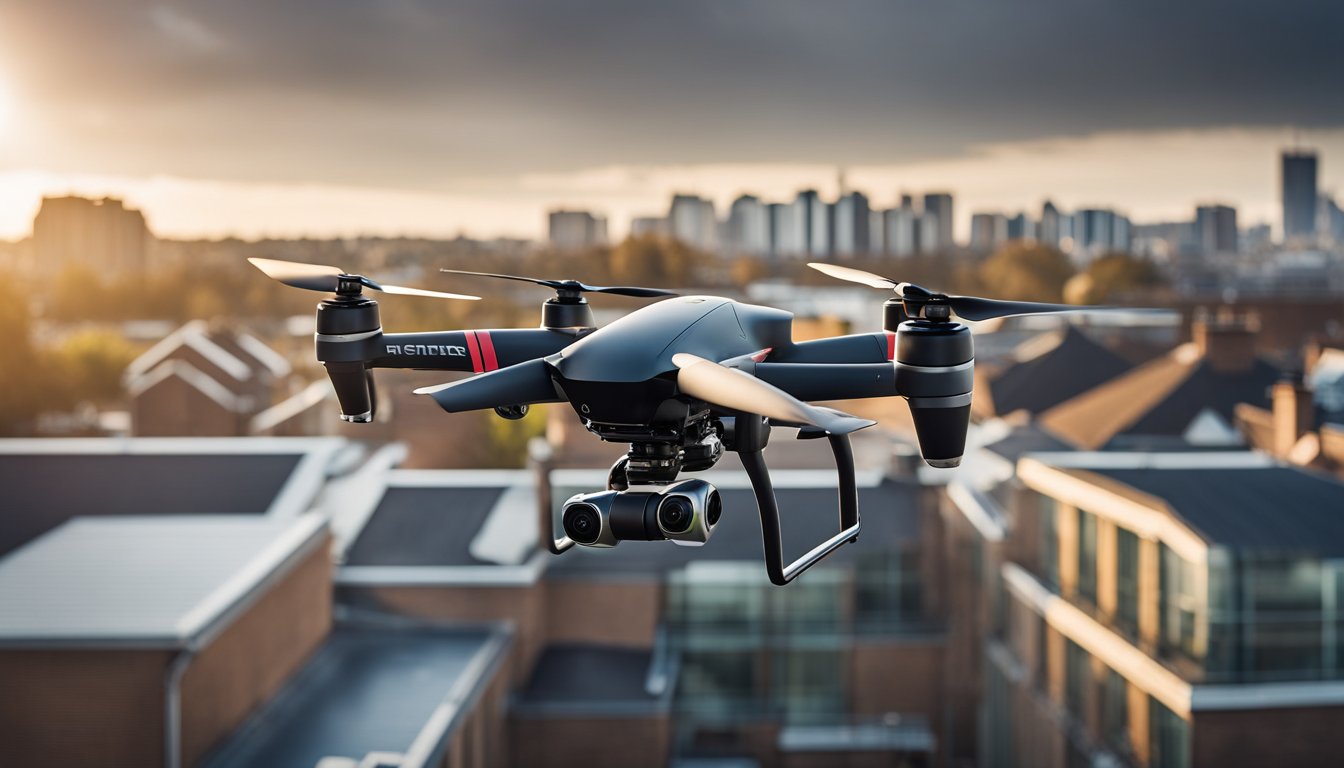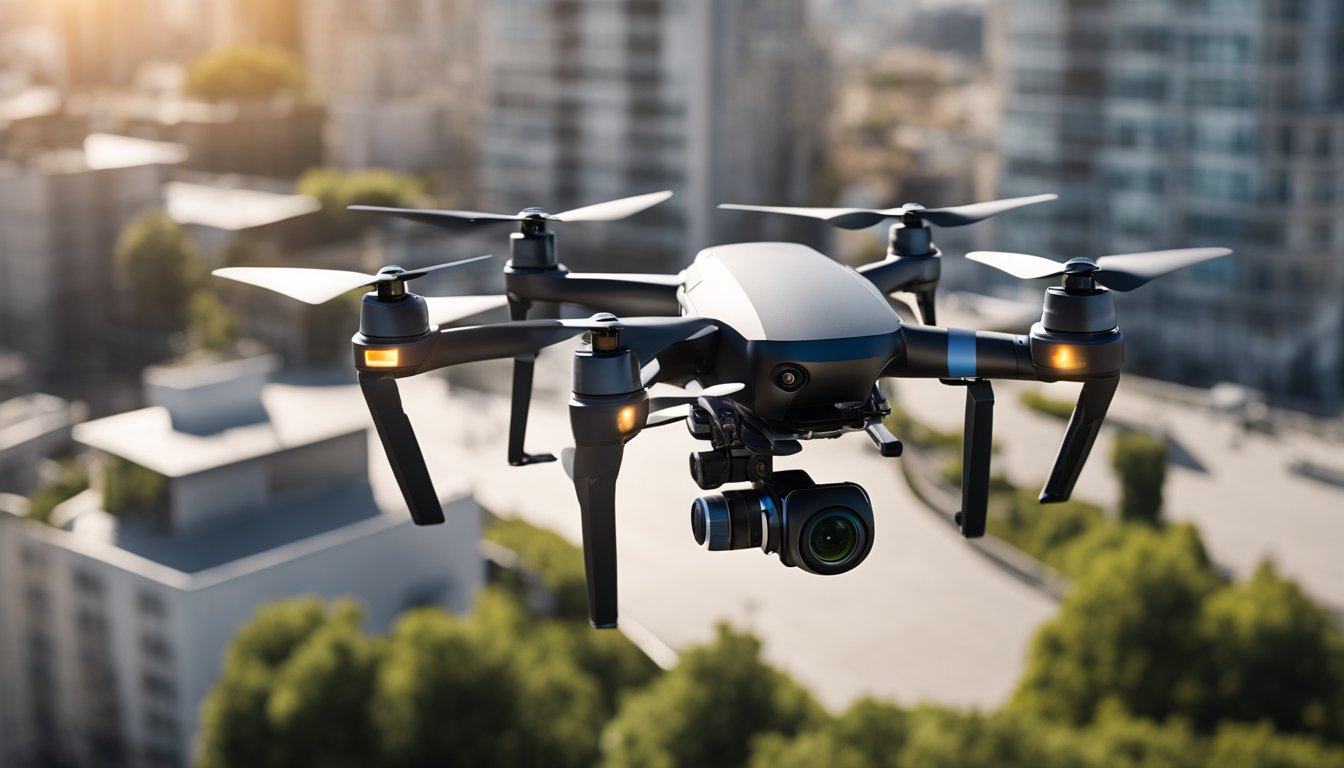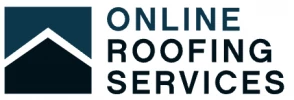Late updated: 20 Jul 2024 12:07
Written by: Oliver Bennett
Innovative Drone Use for Roof Inspections in the UK: Enhancing Efficiency and Safety
Drones are transforming roof inspections across the UK, offering unprecedented efficiency and safety. With advanced technology and high-resolution cameras, drones can deliver detailed assessments without the need for dangerous climbs or scaffolding. This innovative approach not only enhances accuracy but also reduces inspection time significantly, ensuring thorough, quick, and cost-effective evaluations.

The success of drone roof inspections hinges on several factors: the quality of the drone, its operational range, and adherence to safety regulations. High-resolution cameras, extended battery life, and stable flight control are essential for capturing high-quality data. Complying with UK regulations ensures safety and legal operation, making the process reliable and professional.
Additionally, integrating thermal and LiDAR data collection enhances the inspection's comprehensiveness. These technologies allow us to identify potential issues that are not visible to the naked eye, providing a complete picture of the roof's condition. Combining these capabilities makes drone roof inspections a game-changer, setting a new standard in the industry.
Key Takeaways
- Drone roof inspections enhance efficiency and safety.
- Quality cameras and compliance with regulations are crucial.
- Thermal and LiDAR data offer comprehensive insights.
Fundamentals of Drone Roof Inspections

Drone roof inspections are revolutionising how we assess the condition and integrity of roofs, offering significant benefits in terms of safety, accuracy, and efficiency. Utilising advanced technology and specialised equipment enhances these inspections, making them invaluable for professionals in the field.
Benefits and Advantages
The use of drones for roof inspections considerably reduces the risks associated with traditional methods, such as ladder falls and roof damage. Safety is paramount, and drones provide a way to obtain thorough inspections without endangering personnel.
Efficiency is another critical factor. Using drones allows inspectors to cover large areas quickly, providing comprehensive data in a fraction of the time it would take manually. This speed translates to cost-effective operations, saving both time and money.
Accuracy in data collection is enhanced with drones equipped with high-resolution cameras and thermal imaging. These tools can detect minor issues, such as cracks or heat loss, enabling early maintenance interventions and prolonging roof life. The precise measurements from drone surveys ensure reliable data for making informed decisions.
Technology and Equipment
The technology behind drone roof inspections includes various sophisticated tools. High-resolution cameras capture detailed images, essential for identifying even the smallest defects. Drones like the DJI Mavic 3 Pro and the Autel Robotics EVO 2 Pro V3 are leaders in this space due to their advanced imaging capabilities and long battery life.
Thermal imaging provides additional insights by detecting temperature variations, vital for spotting issues invisible to the naked eye, such as insulation leaks or moisture accumulation. LiDAR technology is also employed to create accurate 3D models of roofs, giving a comprehensive view of the structure's condition.
Battery life is crucial for extended inspections. Newer drones offer longer flight times, reducing interruptions and increasing the thoroughness of inspections. Ensuring the right equipment is used not only maximises data quality but also improves the overall efficiency of the inspection process.
Operational Aspects and Regulations

In this section, we cover the critical elements for successful drone roof inspections in the UK, focusing on pilot expertise, safety, and detailed reporting for insurance and maintenance purposes.
Inspection Process and Pilot Expertise
The inspection process begins with selecting a suitable drone. Modern drones come equipped with high-resolution cameras, offering crystal clear imagery. The DJI Phantom 4 RTK and Mavic 2 Pro are popular choices due to their stability and advanced control systems.
Pilot expertise is essential. Certified drone pilots perform pre-flight checks and monitor weather conditions to ensure stable flight. Knowledge of 3D photogrammetry allows pilots to create detailed orthomosaic maps, which are invaluable for accurate assessments.
Traditional methods, like using ladders or scaffolding, are not only riskier but also time-consuming. With drones, inspections can be conducted swiftly and safely.
Safety Protocols and Legislation
Safety is paramount in drone operations. Before takeoff, pilots conduct thorough pre-flight inspections, including equipment checks and route planning to avoid obstacles. Safety protocols demand adherence to the UK's Civil Aviation Authority (CAA) regulations.
CAA legislation requires pilots to have specific permissions for commercial drone use. This ensures compliance with airspace restrictions and privacy laws. Continuous training helps pilots stay updated on evolving regulations.
The use of artificial intelligence assists in maintaining flight stability and control, reducing the risk of accidents. Safety measures not only protect the drone and property but also enhance the efficiency of the drone survey.
Analysis and Reporting
Once the inspection is complete, the data collected is crucial for generating detailed reports. High-resolution images are processed using advanced software to create 3D models and orthomosaics, providing a comprehensive view of the roof's condition.
These detailed reports are instrumental in insurance claims, offering indisputable evidence of roof damage. Accurate analysis helps in identifying issues like leaks, structural weaknesses, and other defects.
Drone roof inspection costs vary but are generally more economical compared to traditional methods. The speed and accuracy of drone inspections lead to better-informed decisions regarding maintenance and repairs.
Frequently Asked Questions
In this section, we address some of the most common queries about drone use for roof inspections in the United Kingdom. We aim to provide clear and concise answers to help you better understand the process, benefits, and requirements.
How much does a drone roof inspection typically cost in the United Kingdom?
Drone roof inspection costs in the UK can vary widely. On average, you might expect to pay between £200 and £600, depending on factors like roof size, complexity, and the specific services required.
What are the primary benefits of using drones for roof inspections?
Using drones for roof inspections offers several advantages. Drones can quickly access and capture areas that are difficult to reach safely, reducing risk and time inefficiency. High-resolution imagery and detailed data provide an accurate assessment of the roof's condition, facilitating timely maintenance and repairs.
Which model of drone is considered the best for conducting roof inspections?
Several drone models are well-suited for roof inspections. Popular choices include the DJI Mavic 2 Pro and the DJI Phantom 4 Pro, both known for their high-resolution cameras and reliable stability. These models provide the essential features needed for detailed and efficient roof inspections.
What software is recommended for analysing drone-captured data from roof inspections?
Multiple software solutions are available for analysing drone-captured data. Pix4D and DroneDeploy are two widely recommended options. These platforms offer tools for creating detailed 3D models, orthomosaics, and other analytical features essential for thorough roof inspections.
Are thermal imaging drones effective for roof inspections, and what advantages do they offer?
Thermal imaging drones are highly effective for roof inspections. They can detect heat loss, moisture accumulation, and other issues not visible with standard cameras. This technology is invaluable for identifying potential problems before they become significant issues, ensuring better maintenance and energy efficiency.
What are the legal requirements for operating drones for roof inspections in the UK?
In the UK, operating drones for roof inspections requires compliance with Civil Aviation Authority (CAA) regulations. Operators must obtain a General VLOS Certificate (GVC) and adhere to guidelines on altitude, proximity to people, and flight zones. Additionally, drone operators need proper insurance and permissions when operating in restricted areas.
